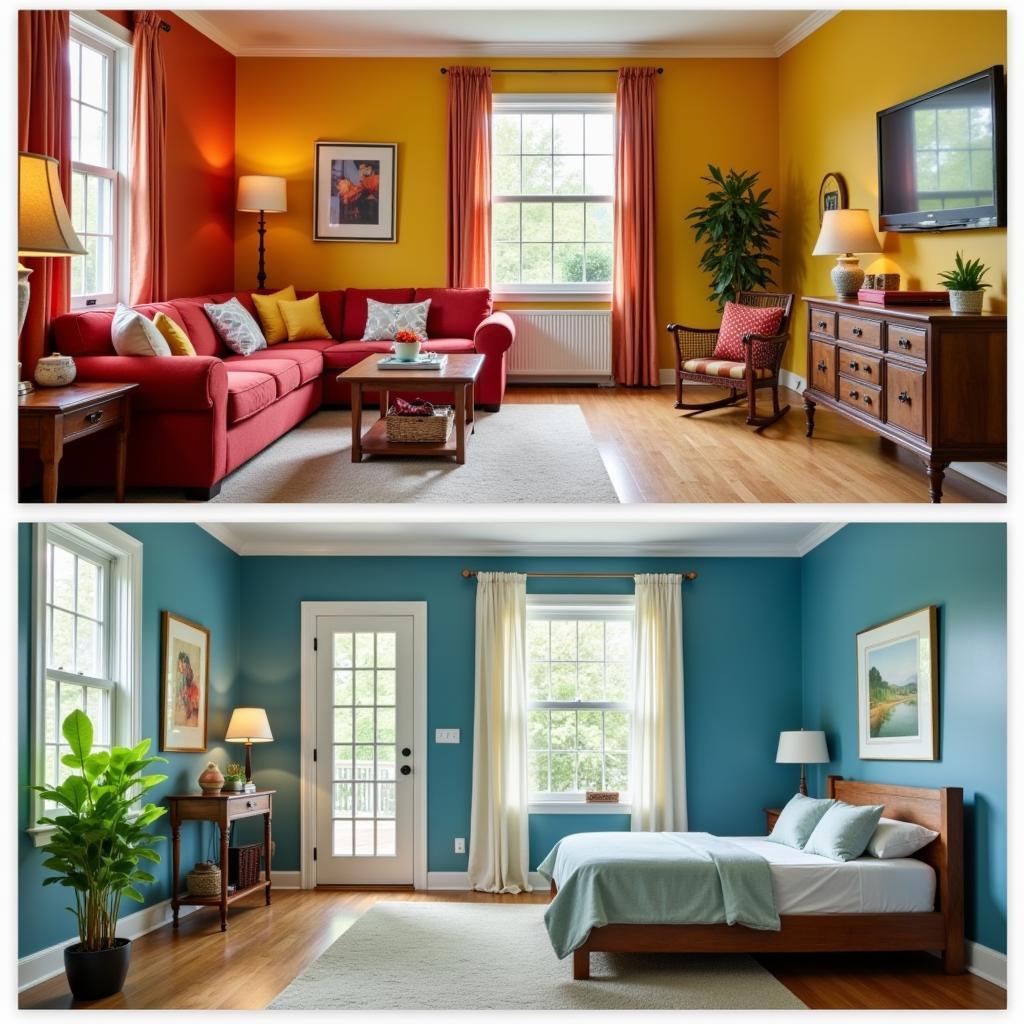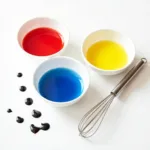Understanding whether a color is cool or warm is fundamental to creating harmonious and impactful color palettes in your home. Is this color cool or warm? This seemingly simple question opens up a world of design possibilities, influencing the mood, perceived size, and overall aesthetic of a space. Let’s dive into the fascinating world of color temperature. is grey a warm or cool color
Decoding Color Temperature: Warm vs. Cool
Color temperature is a way to describe the subjective feeling a color evokes. Warm colors, like reds, oranges, and yellows, are associated with fire, sunlight, and warmth, creating a sense of energy and coziness. Cool colors, such as blues, greens, and purples, bring to mind water, sky, and ice, fostering a calm and tranquil atmosphere. is brown a warm or cool color
 Color Wheel Showing Warm and Cool Colors
Color Wheel Showing Warm and Cool Colors
How to Determine if a Color is Cool or Warm
While some colors are clearly warm or cool, others can be more complex. Here’s a breakdown of how to identify the temperature of any color:
- Look at the undertones: Often, the subtle undertones dictate the temperature. For example, a grey with a blue undertone is cool, while one with a yellow undertone is warm.
- Consider the color’s associations: Does the color remind you of the sun or the sea? This intuitive approach can be surprisingly accurate.
- Compare it to other colors: Place the color next to a known warm color and then a known cool color. The contrast will often reveal its temperature.
Understanding Undertones: The Key to Color Temperature
Undertones are the subtle hints of color within a dominant hue. They are crucial in determining whether a seemingly neutral color, like grey or beige, leans warm or cool. Identifying undertones requires careful observation and comparison.
The Psychology of Warm and Cool Colors
Color psychology plays a significant role in how we perceive and react to different hues. Understanding these effects can help you choose the right colors for your space. Warm colors stimulate and energize, making them ideal for social spaces like living rooms and dining rooms. Cool colors, on the other hand, promote relaxation and focus, making them suitable for bedrooms and offices.
Is Gray a Warm or Cool Color? It Depends!
Grey, a versatile neutral, can be either warm or cool depending on its undertones. A grey with blue or purple undertones is considered cool, creating a calm and sophisticated ambiance. A grey with yellow or beige undertones is warm, offering a more inviting and cozy feel. is gray a warm or cool color
Applying Color Temperature to Interior Design
Once you understand color temperature, you can use this knowledge to create stunning interiors. Here are some tips:
- Create balance: Mix warm and cool colors to achieve a balanced and dynamic space.
- Consider the room’s function: Choose warm colors for active areas and cool colors for relaxing spaces.
- Manipulate perceived space: Warm colors advance, making a room feel smaller, while cool colors recede, making a room feel larger.
 Room Design Examples Using Warm and Cool Colors
Room Design Examples Using Warm and Cool Colors
Conclusion: Mastering Color Temperature for a Harmonious Home
Understanding whether is this color cool or warm empowers you to create spaces that truly reflect your personality and style. By carefully considering the interplay of warm and cool hues, you can transform your home into a haven of comfort, style, and visual harmony. what colors are warm and cool is burgundy a cool or warm color
FAQ
- What is the easiest way to determine a color’s temperature?
- Can a color be both warm and cool?
- How can I use color temperature to make my room look bigger?
- What are some examples of warm and cool neutral colors?
- How does color temperature affect mood?
- Are there any cultural associations with warm and cool colors?
- What are some common mistakes to avoid when using warm and cool colors in interior design?
Need assistance with your color choices? Contact us at 0373298888, email us at [email protected] or visit our showroom at 86 Cau Giay, Hanoi. We have a 24/7 customer service team ready to help.

